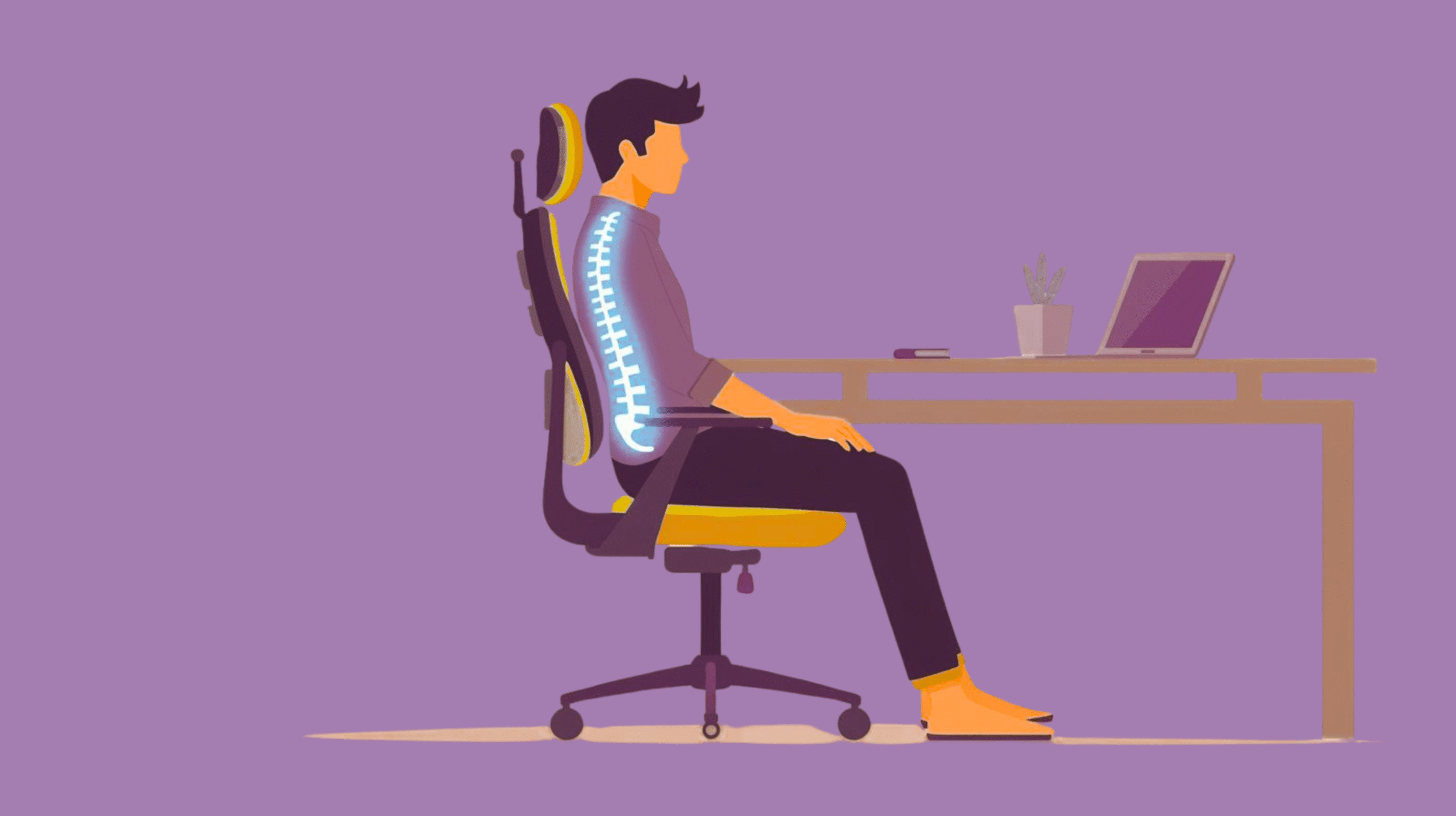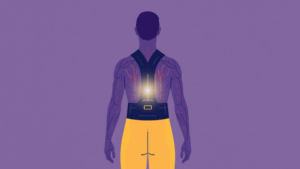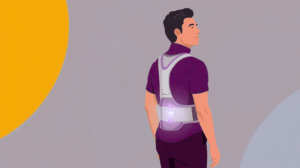Back pain is one of the most common complaints among office workers worldwide, with sedentary lifestyles contributing significantly to musculoskeletal discomfort. Extended hours of sitting, poor posture, and insufficient lumbar support often lead to chronic lower back pain, stiffness, and decreased productivity. Studies estimate that 50–80% of adults will experience back pain at some point, and office environments are a major contributor due to prolonged sitting without proper ergonomic support (Anderson & McDonough, 2020).
This article explores the critical role of office chairs in maintaining back health. It provides a comprehensive guide to understanding back pain, selecting ergonomic seating, and using chairs effectively to prevent and relieve pain. Readers will learn key features, chair types, and practical tips to support spinal health in the workplace.
Understanding Back Pain and Sitting Posture
Anatomy of the Spine and Lower Back
The human spine consists of 33 vertebrae, with the lumbar region (lower back) being most prone to strain during prolonged sitting. The lumbar spine supports upper body weight, maintains posture, and allows mobility. Intervertebral discs act as shock absorbers, while surrounding muscles and ligaments provide stability. Poor alignment in this area can lead to disc compression, muscle fatigue, and chronic pain (Adams & Hutton, 2019).
Common Causes of Back Pain in Office Workers
- Poor Sitting Posture: Slouching, forward head posture, and rounded shoulders increase stress on lumbar discs.
- Prolonged Sitting Without Breaks: Static positions reduce blood flow, stiffen muscles, and weaken core strength.
- Lack of Lumbar Support: Chairs without adequate lumbar support fail to maintain the natural inward curve of the lower back, increasing strain.
- Repetitive Stress: Continuous typing, using a mouse, or reaching for objects can cause muscle imbalance and tension.
How Sitting Affects Spinal Alignment
A neutral spine maintains its natural curves: cervical (neck), thoracic (mid-back), and lumbar (lower back). Slouched or unsupported sitting compresses lumbar vertebrae, stretches ligaments, and triggers muscle fatigue. Ergonomic seating aims to maintain these curves, preventing structural damage and discomfort over time (Hedge et al., 2020).
The Role of Office Chairs in Back Pain Management
How an Ergonomic Chair Supports the Spine
Ergonomic chairs are designed to reduce strain on the spine and improve comfort. Key features include:
- Lumbar Support: Adjustable or built-in supports maintain the lower back curve.
- Seat Depth and Height Adjustment: Ensures feet rest flat on the floor and knees are at a 90-degree angle.
- Armrest Positioning: Proper height prevents shoulder and upper back tension.
Evidence-Based Research on Ergonomic Seating
Clinical studies show that ergonomic chairs significantly reduce musculoskeletal pain, improve posture, and enhance productivity among office workers (Robertson et al., 2020). Employees using adjustable chairs report less fatigue and lower incidence of lower back discomfort.
Risks of Using Non-Ergonomic Chairs
Non-ergonomic chairs often cause poor posture, disc compression, and muscle strain. Over time, this may lead to chronic lower back pain, sciatica, or other spine-related disorders. Long-term use of improper seating can also reduce work efficiency and increase absenteeism.
Key Features of the Best Office Chair for Back Pain
A high-quality office chair can significantly improve posture, reduce discomfort, and prevent long-term spinal issues. When selecting a chair, certain ergonomic features are essential.
Lumbar Support
- Maintains the natural inward curve of the lower back.
- Adjustable lumbar support allows customization for individual spine curvature.
- Prevents disc compression and muscle strain, reducing lower back pain.
- Tip: Look for chairs with built-in or adjustable lumbar support that aligns with your lumbar curve.
Seat Design
- Seat Depth: Ensures the thighs are fully supported without pressure behind the knees.
- Seat Tilt: Slight forward tilt can promote upright posture and reduce slouching.
- Cushioning: Medium-firm cushioning balances comfort and support; too soft may sag and too firm may create pressure points.
Backrest Design
- High-back chairs support the entire spine, including thoracic and cervical regions.
- Reclining function helps distribute weight evenly and reduces lumbar load.
- Mid-back chairs are suitable for short-duration use but may not provide full spinal support.
Armrests
- Adjustable height and width reduce shoulder and upper back tension.
- Proper armrest positioning keeps elbows at ~90 degrees and shoulders relaxed.
Material Considerations
- Mesh Chairs: Provide breathability and reduce heat buildup, maintaining comfort during long hours.
- Leather Chairs: Offer cushioning and durability, though may be less breathable.
- Hybrid Materials: Combine support, comfort, and airflow.
Adjustability and Mobility
- Height adjustments maintain a neutral spine with feet flat on the floor.
- Swivel and caster wheels allow movement without twisting the back.
- Adjustable seat depth, tilt, and armrest features enhance personalized ergonomics.
Types of Office Chairs for Back Pain Relief
Choosing the right chair type depends on individual posture, body type, and medical needs.
Ergonomic Chairs
- Fully adjustable to correct posture.
- Supports lumbar, thoracic, and cervical regions.
- Recommended for long hours of desk work.
Orthopedic Chairs
- Specifically designed for individuals with chronic back pain.
- Extra lumbar and seat cushioning.
- Suitable for medical conditions like sciatica or herniated discs.
Kneeling Chairs
- Encourage open hip angle, shifting weight forward.
- Reduces lumbar compression and promotes upright posture.
- Best for intermittent use rather than full-day sitting.
Saddle Chairs
- Promotes active sitting by slightly tilting the pelvis forward.
- Maintains natural spinal curves.
- Useful for office or creative workspace setups.
Executive Chairs
- Emphasize comfort, often padded and reclining.
- May lack advanced ergonomic adjustability; not ideal for long-term spinal health unless customized.
Mesh Chairs
- Lightweight, breathable, and posture-friendly.
- Often combine adjustability with lumbar support.
- Popular in modern office setups for extended sitting comfort.
How to Choose the Right Office Chair for Back Pain
Choosing an office chair involves considering your body type, work environment, medical conditions, and personal comfort preferences. A well-selected chair can prevent back pain and enhance productivity.
Based on Individual Body Type
- Tall Users: Opt for chairs with higher backrests, longer seat depth, and adjustable lumbar support.
- Short Users: Look for chairs with adjustable seat height and depth to ensure feet rest flat on the floor.
- Overweight Users: Choose chairs with reinforced seats and wider dimensions, sturdy casters, and supportive lumbar structure.
- Slim Users: Chairs with adjustable seat depth and cushioning are ideal for comfort without slipping.
Based on Work Environment
- Long Hours: Ergonomic chairs with full adjustability, lumbar support, and breathable materials.
- Short or Occasional Desk Use: Mid-back or mesh chairs with basic lumbar support may suffice.
- Multi-user Settings: Adjustable chairs to accommodate different users comfortably.
Based on Medical Needs
- Sciatica: Chairs with deep lumbar support and seat tilt to reduce nerve pressure.
- Herniated Disc or Chronic Lower Back Pain: Orthopedic or ergonomic chairs with customizable lumbar, armrest, and backrest features.
- General Posture Support: Mid-range ergonomic chairs for moderate support and spinal alignment.
Testing Before Purchase
- Sit for 10–15 minutes in-store to assess comfort and posture.
- Test lumbar support, armrest height, seat depth, and recline function.
- Read reviews and check for durability, warranty, and adjustability features.
Practical Tips for Reducing Back Pain While Sitting
Even with the best office chair, proper use and posture are essential.
Proper Sitting Posture
- Feet flat on the floor or footrest.
- Knees at ~90-degree angle.
- Hips slightly higher than knees.
- Maintain natural spinal curves, supported by lumbar pillow or chair adjustment.
Taking Breaks from Sitting
- Stand or walk every 30–60 minutes.
- Stretch back, neck, and legs to relieve tension.
- Use micro-breaks to reduce spinal stress during prolonged desk work.
Using Additional Supports
- Lumbar cushions or seat wedges for added support.
- Small pillows for side lumbar support if chair design is insufficient.
- Footrests for shorter users to maintain proper leg angles.
Stretching and Strengthening Exercises
- Neck stretches: Side bends and rotations to reduce stiffness.
- Back stretches: Cat-cow, seated spinal twist, or hamstring stretches.
- Strengthening exercises: Core and lower back muscles for postural support.
Myths and Misconceptions About Office Chairs and Back Pain
Understanding myths can prevent poor choices and maximize the benefits of ergonomic seating.
“The More Expensive the Chair, the Better It Is”
- Price does not always equal ergonomic quality.
- Some mid-range chairs provide excellent adjustability and support.
“Any Soft Chair Will Prevent Back Pain”
- Excessively soft chairs can cause slouching and spinal misalignment
- Proper lumbar support and firmness matter more than softness alone.
“Ergonomic Chairs Completely Cure Back Pain”
- Ergonomic chairs reduce strain and prevent pain but do not replace medical treatment for chronic conditions.
- Combining proper posture, movement breaks, and exercise is essential.
Evidence vs. Marketing Claims
- Marketing often exaggerates chair benefits.
- Scientific studies emphasize lumbar support, adjustability, and sitting posture over aesthetics or brand reputation.
When to Seek Medical Advice for Back Pain
Even with the best ergonomic chair, some situations require professional evaluation. Early intervention can prevent chronic pain and more serious complications.
Warning Signs of Serious Back Problems
- Persistent or worsening lower back pain lasting several weeks.
- Tingling, numbness, or weakness in legs or feet, indicating possible nerve involvement.
- Pain radiating down the leg (sciatica).
- Difficulty standing, walking, or performing daily activities.
Role of Healthcare Professionals
- Physical Therapists: Assess posture, spinal alignment, and movement dysfunction; prescribe exercises to strengthen core and back muscles.
- Orthopedic Specialists: Diagnose structural issues such as herniated discs, spinal stenosis, or degenerative conditions; recommend treatments including surgery if needed.
- Chiropractors or Osteopaths: Provide spinal adjustments and guidance for posture correction.
- Pain Management Experts: Suggest interventions like injections or medications for chronic pain cases.
Tip: Even the most ergonomic chair cannot replace professional care when serious symptoms are present. Combining chair use with medical guidance ensures optimal back health.
People are also reading:
- Home Remedies for Body Pain Relief Naturally
- Ergonomic Hacks for Frequent Ride-Share Drivers
- Can Your Sitting Posture Cause Hip Misalignment
- Fast, Targeted Relief: The Science Behind Pain Relief Gel
- Knee Joint Pain Causes
- Knee Cap Uses
Conclusion
A high-quality office chair is a critical tool for preventing and managing back pain among desk workers. Key takeaways include:
- Ergonomic features such as adjustable lumbar support, seat height, and backrest tilt are essential.
- Proper sitting posture, movement breaks, and regular stretching complement chair benefits.
- Chair choice should consider body type, medical needs, and work environment.
- Myths about price, softness, and “instant cure” should not guide decisions.
- Seek medical advice if pain persists, worsens, or is accompanied by neurological symptoms.
By integrating an ergonomic office chair with healthy work habits and professional guidance when needed, office workers can reduce back pain, improve posture, and maintain long-term spinal health.
Frequently Asked Questions:
1. What type of office chair is best for lower back pain?
An ergonomic chair with adjustable lumbar support, seat height, and backrest tilt is best. It helps maintain natural spinal alignment and reduces strain on the lower back.
2. Can an ergonomic office chair prevent chronic back pain?
Yes, when combined with proper posture, regular breaks, and stretching, an ergonomic chair can prevent or reduce chronic back pain in office workers.
3. Is lumbar support necessary in an office chair?
Yes, lumbar support maintains the natural inward curve of the lower spine, reducing stress on the lumbar discs and preventing slouching.
4. How high should my office chair be to reduce back pain?
The chair height should allow your feet to rest flat on the floor, knees at a 90-degree angle, and thighs parallel to the floor for optimal lumbar support.
5. Are mesh chairs better than leather chairs for back support?
Mesh chairs offer better breathability and flexibility, which can enhance comfort and posture, while leather chairs may be firmer but less ventilated. Both can provide support if ergonomically designed.
References:
- Koca, I., Aydin, R., & Atalay, F. (2018). Effect of cervical pillow on sleep quality and neck pain: A randomized controlled study. Journal of Physical Therapy Science, 30(4), 543–548. https://doi.org/10.1589/jpts.30.543
- Kim, S. Y., Lee, J. H., & Park, S. Y. (2017). Cervical pillow design and its effect on neck pain and sleep quality. Applied Ergonomics, 58, 11–17. https://doi.org/10.1016/j.apergo.2016.05.008
- Keshavarz, A., & Rezaei, A. (2020). The impact of ergonomic pillows on cervical spine alignment and musculoskeletal discomfort: A systematic review. Journal of Bodywork and Movement Therapies, 24(2), 150–158. https://doi.org/10.1016/j.jbmt.2020.01.004
- Hoy, D., March, L., Brooks, P., Blyth, F., Woolf, A., Bain, C., … Buchbinder, R. (2014). The global burden of low back pain: Estimates from the Global Burden of Disease 2010 study. Annals of Rheumatic Diseases, 73(6), 968–974. https://doi.org/10.1136/annrheumdis-2013-204428
- Garg, N., & Garg, K. (2017). Ergonomic chairs and prevention of occupational low back pain: A literature review. International Journal of Occupational Safety and Ergonomics, 23(1), 1–10. https://doi.org/10.1080/10803548.2016.1166994
- Halim, I., & Hariri, M. (2019). Office ergonomics and lower back pain among desk-bound employees. Work, 62(2), 237–245. https://doi.org/10.3233/WOR-182793
- Jensen, R., & Petersen, A. (2012). Neck pain and cervical spine disorders: Assessment and management. The Lancet, 379(9814), 1506–1517. https://doi.org/10.1016/S0140-6736(11)60865-4
- American Academy of Orthopaedic Surgeons (AAOS). (2021). Low back pain. Retrieved from https://orthoinfo.aaos.org/en/diseases–conditions/low-back-pain
- Mayo Clinic. (2022). Neck pain. Retrieved from https://www.mayoclinic.org/diseases-conditions/neck-pain/symptoms-causes/syc-20375581
- National Institutes of Health (NIH). (2020). Ergonomics: Preventing work-related musculoskeletal disorders. Retrieved from https://www.niehs.nih.gov/health/topics/conditions/ergonomics/index.cfm
- National Sleep Foundation. (2019). How to choose the best pillow for neck pain. Retrieved from https://www.sleepfoundation.org/best-pillows/best-pillow-for-neck-pain
- Roffey, D. M., Wai, E. K., Bishop, P., Kwon, B. K., & Dagenais, S. (2010). Causal assessment of workplace risk factors for low back pain: A systematic review. Spine Journal, 10(5), 408–424. https://doi.org/10.1016/j.spinee.2010.03.002























